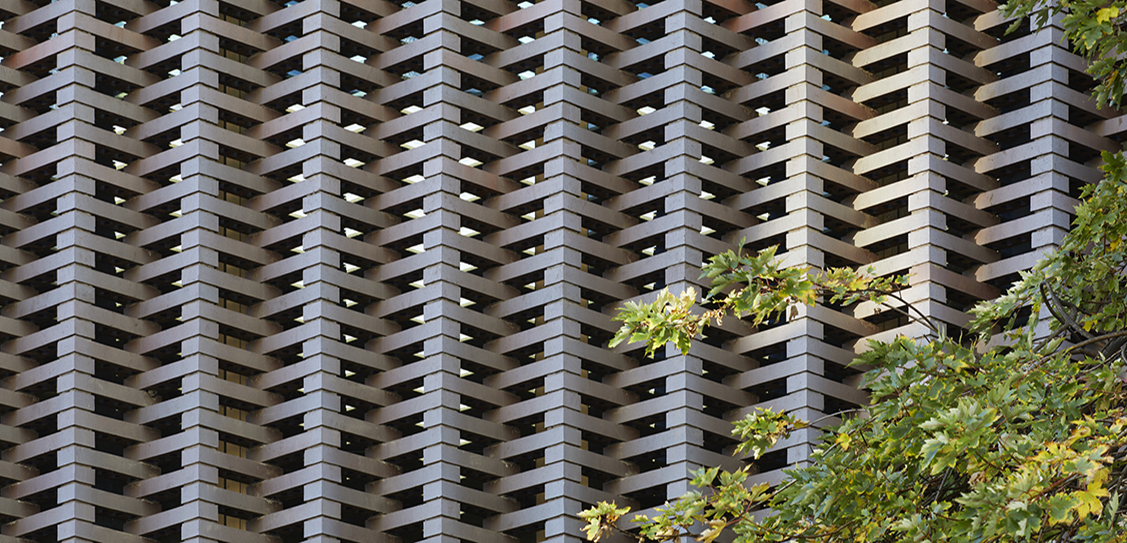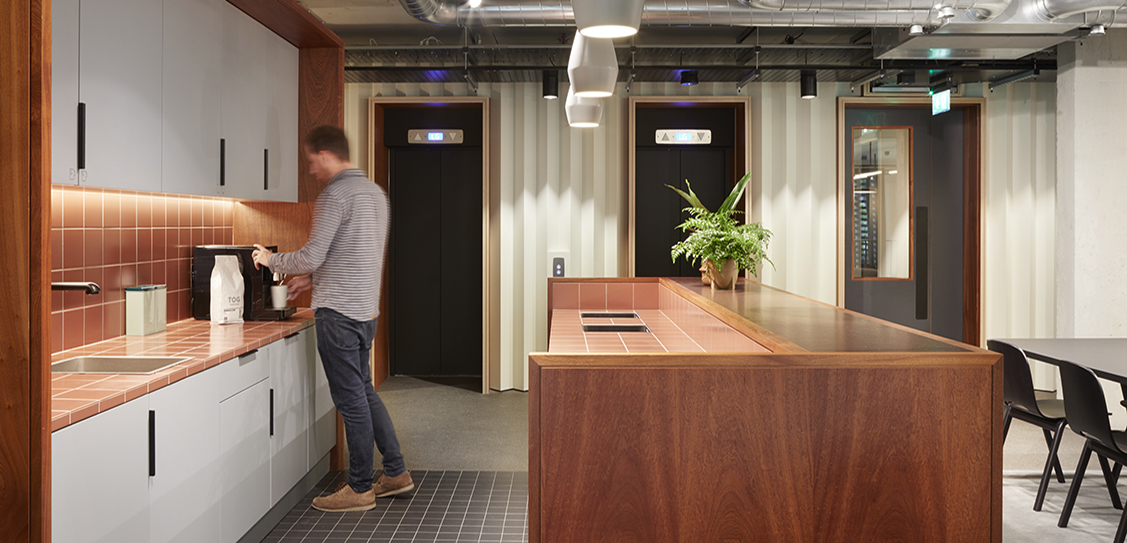The reimagined workspace, set across 70,000ft² over eight storeys, transforms the former 1980’s office building into a larger dynamic space for TOG’s membership base, featuring the best in class amenities including a state-of-the-art gym, café, library, terraces and roof gardens with panoramic views of the city. York House is the fourth building from TOG in the King’s Cross area and its 38th workspace to open in the UK. In designing the interior concept, dMFK cites influences from the Golden Age of British history in sculptures, furniture, as well as craft referencing the building’s roots in the postwar British Art scene, including a retained sculpture created by Geoffrey Clarke.
The work to open up York House and create a welcoming entrance at ground level comprised a substantial five storey extension, constructed using a timber frame and angled lattice brickwork in the same brick as the original building. In transforming the existing façade, dMFK, together with Webb Yates Engineers, have created a decorative external effect complemented by a soft internal diffuse light, illuminating the building as an eyecatching beacon.
Upon entering York House, TOG members and visitors are greeted by a double height reception area formed of raw finishes; the original concrete structure, new exposed timber frame and brick façade. The reception desk is formed as a solid mass of blackened lacquered mild steel that sits in contrast to the intricate façade and feature grid of lighting on the exposed timber soffit above.
Internally the building has been stripped back to its frame, featuring a fit-out of dark wood and terracotta tiles, with deep red and green upholstery inspired by the mid tones of Robin Day. Access to natural daylight remained a priority with the intention of creating a positive and productive environment for members. Wide glazed openings created at ground and lower floors in York House maximize daylight across all of the office and communal lounge spaces.
On the upper floors, a number of private and communal courtyards and stepped roof terraces provide alfresco spaces for TOG’s nomadic members to work from, including a rooftop pavilion crafted from innovative and sustainable materials such as cross-laminated timber and perforated folded aluminium. A second roof terrace on the seventh floor has been created, wrapped in a parapet of plum coloured bricks in a stacked dog-tooth pattern, offering sweeping views across Canary Wharf, the city and St. Pancras.
The redesign of York House has also taken a focus on sustainability and energy efficiency, awarded a BREEAM ‘Excellent’ certification, with methods including the installation of solar panels, premium insulation and double glazing taking the building’s efficiency rating from G to A. With a strong geographic spread of workspaces and characterful buildings across London, the building’s members will benefit from access to TOG’s entire network of 38 open offices in the UK.
We have worked with dMFK Architects to totally transform York House, adding 30% more space to the building with various extensions.
Our seventh and largest office building for The Office Group. dMFK’s goal from the outset was to achieve more permeability, opening the building up to the daylight, giving it a more welcoming feel, and maximising the potential of the space throughout.
B. Knight, Director at dMFK
We will always push for timber over steel or concrete for sustainability reasons. Here it’s shown to work not only functionally but has also become part of the flavour of the building. The transition between the new timber original, exposed, 80s concrete frame at the back of the front extension is a detail that exemplifies how the building industry can become a little kinder and more considerate.
S. Webb, Director, Webb Yates Engineers



